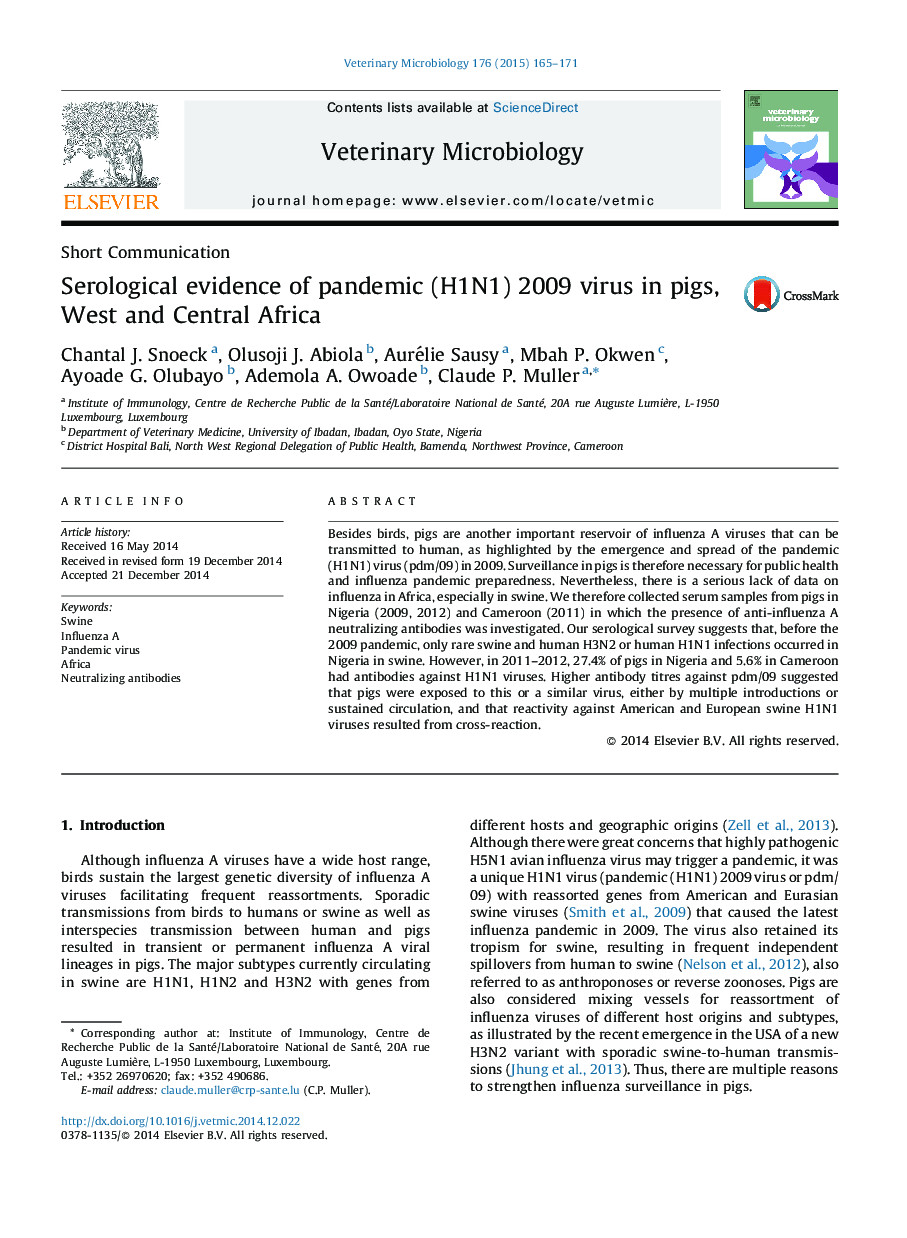| کد مقاله | کد نشریه | سال انتشار | مقاله انگلیسی | نسخه تمام متن |
|---|---|---|---|---|
| 5800126 | 1555353 | 2015 | 7 صفحه PDF | دانلود رایگان |

- Anti-influenza A antibodies were rare in 2009 in swine in Nigeria.
- In 2012, 26% of pigs in Nigeria had antibodies against pandemic (H1N1) 2009 virus.
- In 2011, 5% of pigs in Cameroon had antibodies against pandemic (H1N1) 2009 virus.
- Cross-reaction at lower titres with other swine H1N1 strains was suspected.
Besides birds, pigs are another important reservoir of influenza A viruses that can be transmitted to human, as highlighted by the emergence and spread of the pandemic (H1N1) virus (pdm/09) in 2009. Surveillance in pigs is therefore necessary for public health and influenza pandemic preparedness. Nevertheless, there is a serious lack of data on influenza in Africa, especially in swine. We therefore collected serum samples from pigs in Nigeria (2009, 2012) and Cameroon (2011) in which the presence of anti-influenza A neutralizing antibodies was investigated. Our serological survey suggests that, before the 2009 pandemic, only rare swine and human H3N2 or human H1N1 infections occurred in Nigeria in swine. However, in 2011-2012, 27.4% of pigs in Nigeria and 5.6% in Cameroon had antibodies against H1N1 viruses. Higher antibody titres against pdm/09 suggested that pigs were exposed to this or a similar virus, either by multiple introductions or sustained circulation, and that reactivity against American and European swine H1N1 viruses resulted from cross-reaction.
Journal: Veterinary Microbiology - Volume 176, Issues 1â2, 23 March 2015, Pages 165-171